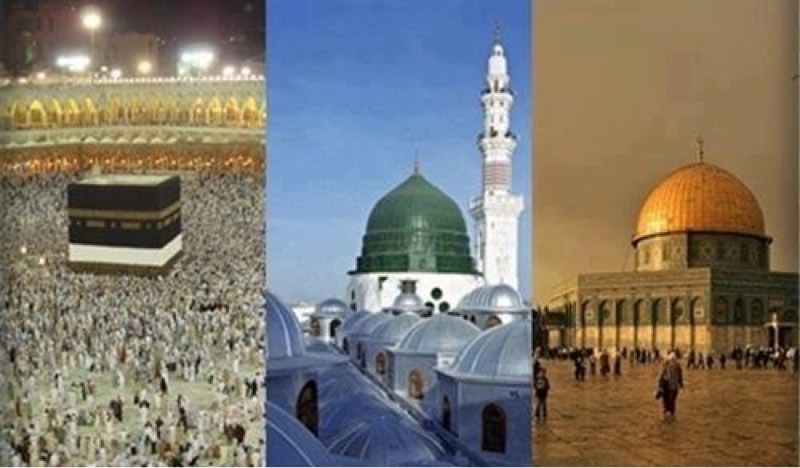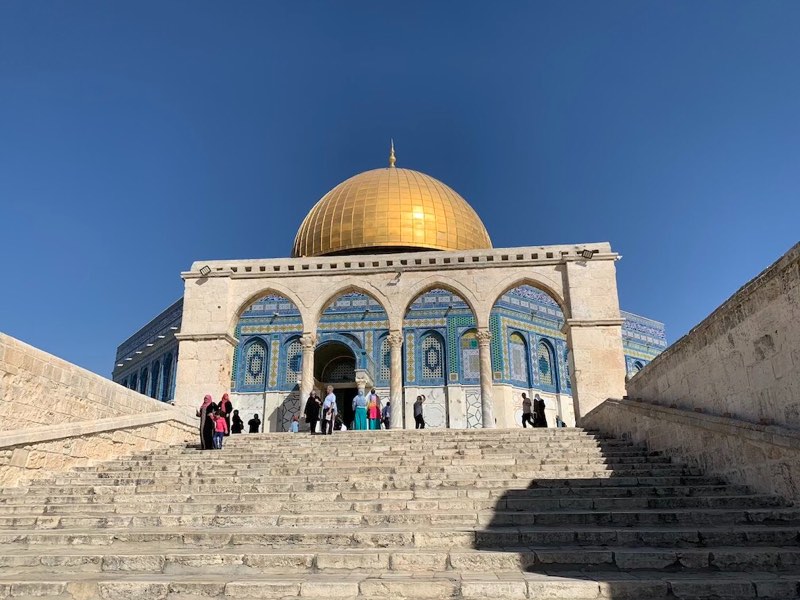What were the factors contributing to the Islamization of Jerusalem?
The Islamization of Jerusalem was a complex process influenced by several key factors over centuries. The city's transformation into a significant Islamic center involved political, religious, and cultural developments. Here are some of the major contributing factors:
1. Early Islamic Conquests:
Caliph Umar's Conquest (637 CE): The process began with the Muslim conquest of Jerusalem by Caliph Umar ibn al-Khattab in 637 CE. The city was taken from the Byzantine Empire, and the early Islamic administration began to reshape its religious and cultural landscape.
Treaty of Umar: After the conquest, the Treaty of Umar guaranteed the protection of Christian holy sites but also established Muslim dominance, setting the stage for further Islamic influence.
2. Religious Significance in Islam:
Al-Aqsa Mosque: Jerusalem holds a significant place in Islam due to the presence of the Al-Aqsa Mosque, considered the third holiest site in Islam after Mecca and Medina. The mosque is located on the Temple Mount, which is known to Muslims as Haram al-Sharif (the Noble Sanctuary).
The Night Journey (Isra and Mi'raj): Islamic tradition holds that the Prophet Muhammad was transported from Mecca to Jerusalem during his Night Journey and ascended to heaven from the Al-Aqsa Mosque. This event greatly enhanced Jerusalem's spiritual significance in Islam.
3. Islamic Governance and Construction:
The Umayyad Caliphate (661-750 CE): The Umayyad dynasty played a significant role in the Islamization of Jerusalem by constructing monumental buildings, including the Dome of the Rock (completed in 691 CE) and the Al-Aqsa Mosque. These structures were built on the Haram al-Sharif, further establishing the Islamic presence in the city.
Abbasid and Fatimid Caliphates: Subsequent Islamic rulers, including the Abbasids and Fatimids, continued to invest in the city's Islamic institutions, ensuring the growth of Muslim religious and cultural life in Jerusalem.
4. Demographic Changes:
Migration and Settlement: Following the Muslim conquest, there was an influx of Arab and Muslim settlers into Jerusalem. This demographic shift gradually changed the city's cultural and religious character.
Conversion of the Local Population: Over time, a significant portion of the local population converted to Islam, further solidifying the city's Islamic identity.
5. Islamic Scholarly and Cultural Development:
Educational Institutions: Islamic rulers established madrasas (Islamic schools) and other religious institutions in Jerusalem, which attracted scholars, students, and religious leaders, contributing to the city's reputation as a center of Islamic learning.
Sufi Orders: Sufism, a mystical branch of Islam, also played a role in the spiritual life of Jerusalem, with various Sufi orders establishing zawiyas (spiritual retreats) in the city.
6. Political and Religious Rivalries:
Conflict with the Crusaders: The Crusades and the subsequent struggle for control of Jerusalem further intensified its Islamic identity. Muslim leaders like Saladin (Salah ad-Din) emphasized the Islamic significance of Jerusalem in their campaigns to reclaim the city from the Crusaders.
Symbol of Muslim Unity: Over time, Jerusalem became a symbol of Muslim unity and resistance against non-Muslim powers, which reinforced its importance in the Islamic world.
7. Cultural Integration:
Islamic Architecture and Arts: The construction of Islamic buildings and the promotion of Islamic arts and culture in Jerusalem over centuries contributed to the city's Islamic character.
Incorporation into Islamic Narratives: Islamic narratives and histories that included Jerusalem as a central element further integrated the city into the broader Islamic world.
The Islamization of Jerusalem was not an overnight process but a gradual transformation shaped by a combination of religious, political, demographic, and cultural factors that evolved over centuries.
What is the significance of constructing the Dome over the Foundation Stone in Islamic belief?
The construction of the Dome over the Foundation Stone, particularly the Dome of the Rock in Jerusalem, holds profound significance in Islamic belief for the following reasons:
1. Night Journey and Ascension: The Foundation Stone is traditionally believed to be the point from which the Prophet Muhammad ascended to heaven during the Isra and Mi'raj (Night Journey and Ascension). This makes it a place of immense spiritual significance in Islam.
2. Historical and Prophetic Associations: The site is associated with several prophets recognized in Islam, including Abraham, who is believed to have nearly sacrificed his son there, and Solomon, who is tied to the location through Islamic tradition.
3. Islamic Architectural Achievement: Built by the Umayyad Caliph Abd al-Malik ibn Marwan in the late 7th century, the Dome of the Rock is one of the earliest surviving examples of Islamic architecture. Its design and decoration reflect the artistic and scientific advances of the early Islamic period.
4. Symbol of Islamic Presence: The construction of the Dome served as a symbol of Islamic power and presence in Jerusalem, a city also sacred to Judaism and Christianity, reinforcing Islam’s spiritual and political presence in the region.
5. Spiritual Focus: While not a mosque, the Dome of the Rock serves as a site for reflection and prayer, highlighting its role as a spiritual and religious focus for Muslims.
6. Cultural and Religious Unity: The Dome represents a point of unity among Muslims, as part of the wider Haram al-Sharif (Noble Sanctuary) complex, which includes Al-Aqsa Mosque, and serves as a symbol of shared religious heritage.
7. Esoteric and Mystical Beliefs: Some Islamic mystical traditions hold that the stone beneath the Dome has esoteric significance, symbolizing the center of the world or the axis mundi.
8. Connection to the Qibla: Before Mecca was established as the qibla (direction of prayer), Muslims initially directed their prayers toward Jerusalem, underscoring the site's early importance in Islamic worship.
The Dome of the Rock is thus a complex symbol in Islamic belief, intertwining religious history, spirituality, and cultural identity, while also representing a remarkable feat of early Islamic architecture.


